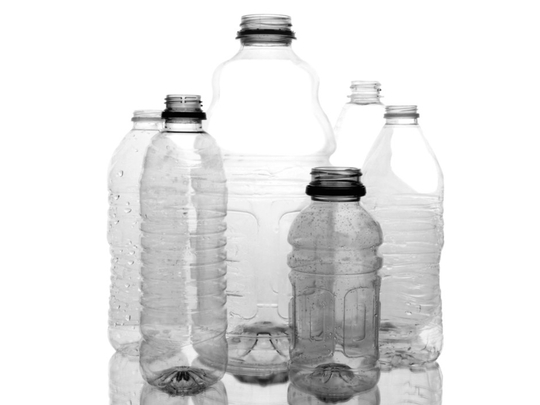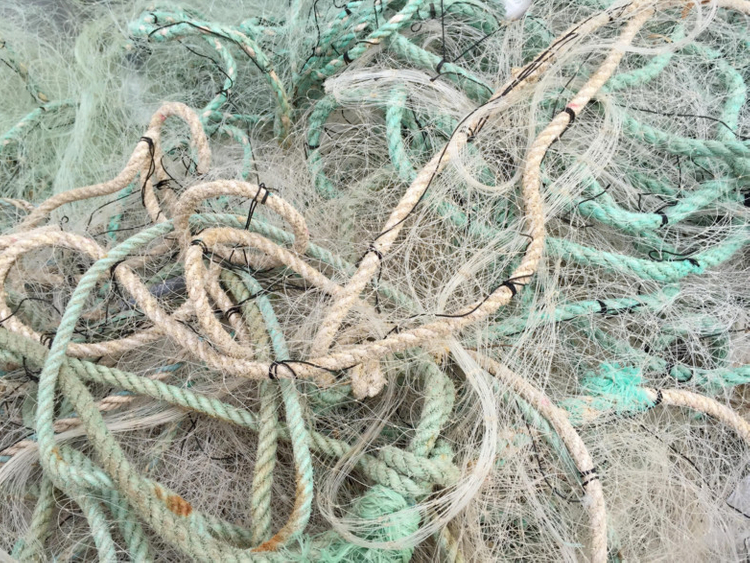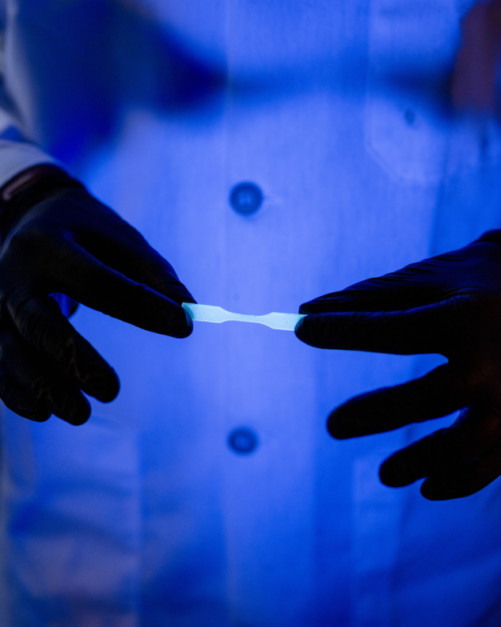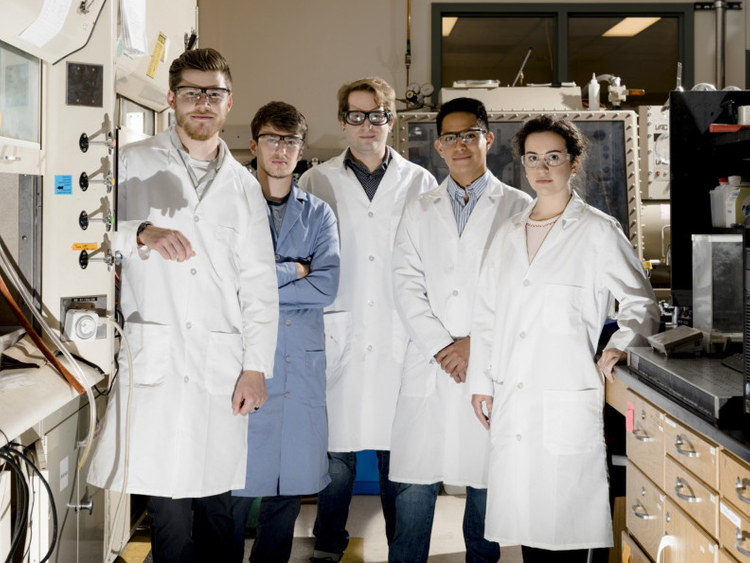
Adam Feinberg had no sooner made a bright yellow thin sheet of plastic than he had to shred it into little pieces. He chose an “I”-shaped mould for the logo of the University of Illinois at Urbana-Champaign, where he is a chemist. Then, he filled it with the plastic bits and stuck it in a hot oven.
“I opened up the mould and there was this beautiful yellow ‘I,’” he recalled. His new plastic passed the first test - it was moldable with heat like regular plastic. But there was another important step left in rethinking the world of durable plastics.
Feinberg placed the “I” under a white light, and five minutes later, only half of it remained. The other half had fallen on the ground. Pieced back together, the “I” had a hole in the middle and in its place was yellow goo. The plastic did not simply melt. Its building blocks, the synthetic polymers within, had reverted to their molecular units. “It was a phenomenal feeling,” he said of the successful experiment.
Built to last
Most synthetic polymers were not designed to disintegrate or disappear. On the contrary, they were meant to last as long as possible once they began replacing metals and glass in long-lasting things like automobiles and airplanes.
But synthetic polymers became so popular and adaptable that decades later, they are at the root of the global burden of billions of tons of plastic waste. The latest villains in environmental campaigns are disposable plastic products formed from synthetic polymers — straws, cigarette filters, coffee cup lids, etc.
During the past few decades, this mismatch between material and product life span has built up plastic waste in landfills and natural environments, some drifting in oceans until mounds and mounds have reached the ends of the world and bits have been ingested by marine life.
Too little gets recycled; in fact, some estimates indicate that a mere 10 per cent of all plastics are recycled every year.
The European Union has proposed banning single-use plastics, seeking to cut production of items including fishing gear and cotton swabs. Cities in the United States have also been trying to ban some plastics, including grocery bags and those ubiquitous straws that have suddenly turned into a symbol of all that is wrong with our throwaway culture.
Search for solutions
The environmental effects of plastic build-up and the declining popularity of plastics have helped to spur chemists on a quest to make new materials with two conflicting requirements: They must be durable, but degradable on command. In short, scientists are in search of polymers or plastics with a built-in self-destruct mechanism.
“It’s two diametrically opposed criteria that we’re trying to juggle,” Feinberg said. It is easier to mould a robust plastic without destroying it, he said, but at the same time, it should not last forever.
“The real trick is to make them stable when you’re using them, and unstable when you don’t want to use them,” said Marc Hillmyer, who leads the Center for Sustainable Polymers at the University of Minnesota. While not a silver bullet for the problem of plastic waste, self-destructing plastics could also enable new applications in drug delivery, self-healing materials and even some electronics.
Indestructibility
The starting point requires picking polymers that are inherently unstable, and often historically overlooked because of their fragility. Given a choice, their units would rather stay as small molecules. What scientists do is force those molecules to link up into long chains, and then trap the resulting polymers.
Dismantling these polymers is sometimes called unzipping them, because once the polymers encounter a trigger that removes those traps, their units fall off one after another until the polymers have completely switched back to small molecules.
“As soon as you start the process,” explained Jeffrey Moore, Feinberg’s supervisor at the University of Illinois, “they just keep going.”
Feinberg’s polymers were imprisoned in circular loops instead of being open-ended chains. By themselves, the loops were stable. For the self-destructing plastic, Feinberg mixed the polymers with a little bit of yellow, light-sensitive dye. When light shines on the plastic, the energised dye molecules rip electrons out from the polymers. The loops break, exposing the polymer ends, and the polymers unzip.
Other scientists trap their polymers by capping the ends of the long chains or linking the chains together into networks. By designing these traps to fail upon meeting certain triggers like light or acid, scientists can control exactly how and when their polymers unzip.
“We can have a big change in properties or complete degradation of the polymer just from one event,” said Elizabeth Gillies, a polymer chemist at Western University in London, Ontario. On-demand, rapid disintegration gives unzipping polymers an edge over biodegradable ones, she said, as biodegradation is often slow and difficult to control.
How firms can help
Using chemically recyclable materials could become practical especially if companies begin taking responsibility for their products after their useful life, Hillmyer said. He co-founded a startup, Valerian Materials, to commercialise the recyclable polyurethane. If car companies had to take back a used car, for instance, it might make sense to have an internal chemical recycling system to make new materials from old ones, he said.
Unzipping polymers could also produce adhesives that can be ‘turned off’. That would help separate complex objects and materials like toys or Formica surfaces into their individual components for recycling.
“We do a terrible job of recycling laminates, composites and even electronics,” said Scott Phillips, a polymer chemist at Boise State University.
Things we can do
1. Consumers, please sort the plastic trash: Having polymers that can unzip so they can be fully recyclable, is a step forward, but consumers still have to do their part. “Pollution exists because the material wasn’t collected,” said Steve Alexander, who leads the US Association of Plastic Recyclers. “If you can’t sort properly, it is just trash.” Collection and sorting remain the biggest problems for recyclers.
2. Governments, please have well-defined disposal mechanisms: For any object that has reached its end of life, this is necessary, said Ramani Narayan, a polymer chemist at Michigan State University,
Arguably, he said, biodegradable plastics also have a self-destruct mechanism, provided they end up in the right place with the right microbes. For that, Narayan is leading a push towards compostable plastics. Compost could divert not only single-use plastics, but also food waste.
“By using the word ‘compostable,’ it defines the environment,” he said, and that, for consumers trying to pick the right bin, is “critical”.
— New York Times News Service




















